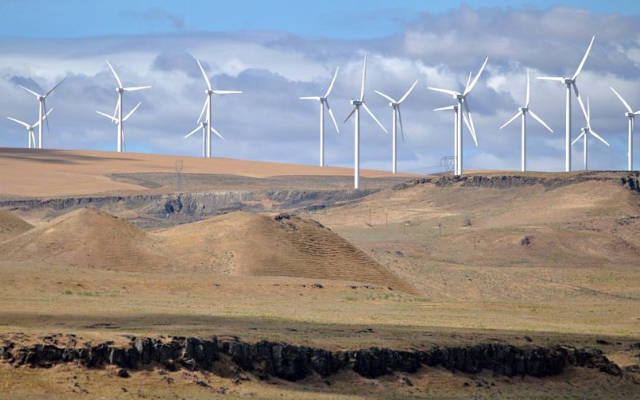Africa: The Green Transition's Surprising New Home

Kenya's Lake Turkana wind farm.
By EVWorld Si Editorial Team
How African nations are leapfrogging fossil fuels to become renewable energy leaders
The Leapfrogging Phenomenon
Africa is experiencing what energy experts call "leapfrogging" - skipping traditional fossil fuel development phases and becoming a potential global leader in clean energy. This transition is driven by both necessity and opportunity, as by 2050, 31 African countries will import more than 50% of their energy demand, reflecting the urgency of moving rapidly towards domestic renewable resources.
Resource Abundance and Potential
Africa holds 60% of the world's best solar resources, along with abundant wind, hydro, and geothermal potential. Yet only a small fraction of this potential has been harnessed. The International Energy Agency projects that solar PV – already the cheapest source of power in many parts of Africa – will outcompete all sources continent-wide by 2030, with renewables accounting for over 80% of new power generation capacity.
Leading Nations and Projects
Kenya: A Renewable Success Story
Kenya emerges as a standout performer, with over 75% access to electricity and a target of 100% renewables by 2030. Kenya's energy now comes from renewables, including geothermal, wind, and solar, with projects like the Lake Turkana Wind Power Project and Olkaria Geothermal Plants serving as exemplary models.
Ethiopia: Continental Hydroelectric Hub
Ethiopia is building the continent's largest hydroelectric project, positioning itself as a regional energy hub through massive infrastructure investments in clean power generation.
Morocco and Egypt: Solar Pioneers
Morocco has developed flagship projects including the Noor Solar Complex, while Egypt has constructed the Benban Solar Park, demonstrating large-scale renewable deployment capabilities.
Economic Drivers
The transition isn't just environmental - it's economic. African countries are developing their energy systems by engaging with international partners in pragmatic ways focused on energy security. Through scaled public investment in solar and wind, Africa can leapfrog fossil fuels and deliver clean energy access while creating meaningful jobs.
International Investment and Support
Chinese exports of solar and wind technologies to Africa rose by 153% year-over-year between 2020 and 2024, with renewables accounting for 59% of Chinese energy projects in Africa in 2024. The Sustainable Energy Fund for Africa (SEFA) provides catalytic finance to unlock private sector investments in renewable energy.
Strategic Implications
This transformation represents more than energy policy - it's a fundamental economic reorientation. Countries traditionally dependent on oil imports are discovering they can achieve energy independence through renewable resources. If all planned renewable additions are carried out, some African nations are well on their way to achieving ambitious energy "leapfrogging" goals.
Conclusion
The "surprising new home" of the green transition turns out to be a continent that combines abundant renewable resources, growing energy demand, economic necessity, and innovative financing mechanisms. Africa's renewable energy revolution demonstrates that the global energy transition may be led not by traditional industrial powers, but by nations with the most to gain from clean, domestic energy sources.
Sources:
- International Energy Agency - Africa Energy Outlook 2022
- UN Environment Programme - Renewable Energy in Africa
- African Development Bank - The State of Renewable Energy in Africa
- World Bank - Clean Energy Transitions in Africa
- World Economic Forum - Africa's renewable energy potential
- OilPrice.com - Africa Could Leapfrog Fossil Fuels And Become A Clean Energy Superpower
- Institute for Security Studies - Africa's Energy Transition
- Carnegie Endowment - Africa's Energy Transition: Balancing Development and Climate Goals
- IRENA - Renewable Energy Market Analysis: Africa
- Power Technology - Renewable Energy in Africa: Progress and Potential
Original Backlink
Views: 77
Articles featured here are generated by supervised Synthetic Intelligence (AKA "Artificial Intelligence").
